BenQ PD2720U (990 euros on Amazon) is the latest addition to the line of professional displays of the Taiwanese brand, whose name has been leading the Olympus of professional brands for years.
We persistently sought the opportunity to try this display, because the conditions were excellent for a complete and full of technology product. One of the most interesting aspects was undoubtedly the fact that the display is presented as designed “for designers”, which means for those who do photography, video, graphics, design and web, which is basically what the writer uses it all for. the days.
The choice of such a product is very interesting compared to more “vertical” products, peripherals dedicated to a specific segment, because it often happens, as in our case it is not possible to have a workstation for each type of work and a display is needed that must accompany with uniform quality and performance in all sectors and minimum compromises.
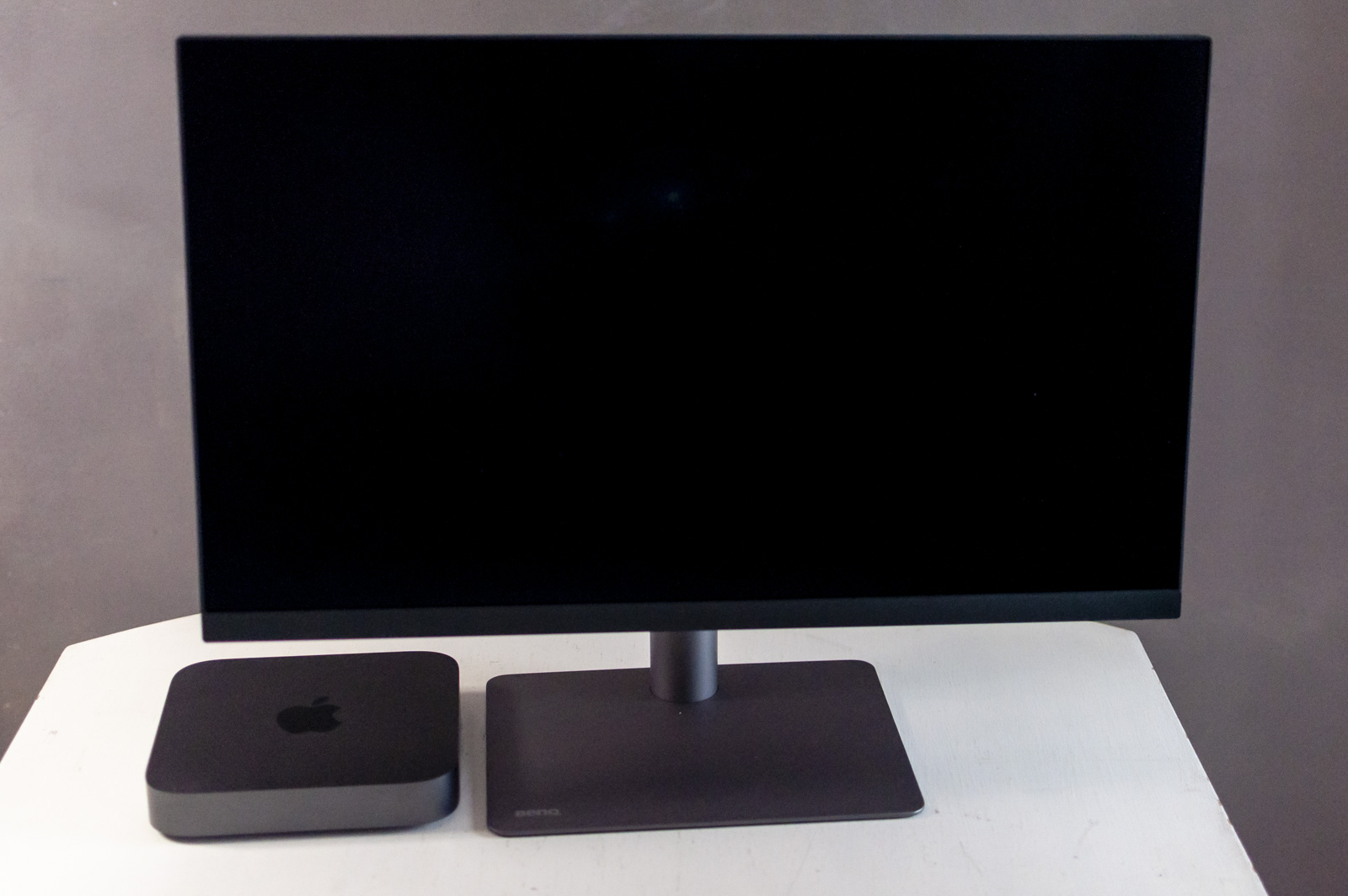
Design
The design of a product like the BenQ PD2720U obviously suffers from the market segment it is aimed at: the design is austere; the external chassis is made of black plastic for the panel and dark gray satin metal for the base and central pin.
It is clearly not a living room display, however it is precisely the simplicity of its lines to offer an intriguing look: the edges are about 9 mm at the side and 20 mm at the bottom, with a white or orange LED at the bottom right. . The whole is overall very discreet and minimal, also because the part of the connectors can be hidden by an additional plastic.
1 of 3 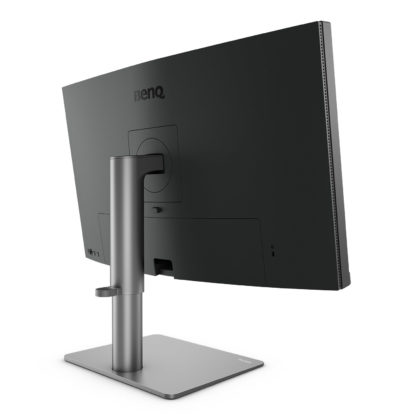
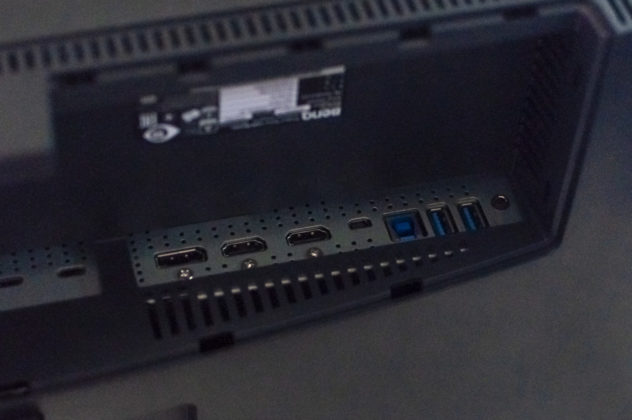

The rear houses all the connectors: two HDMI 2.0 sockets, one Display Port, one Mini Display Port, one USB 3.0 in and two USB 3.0 Type A out (to act as a HUB), plus two Thunderbolt 3 ports, which are of an extraordinary comfort for those who have a computer compatible with this technology and among these computers there are also Macs.
The connectors are all placed in the lower part, not visible, which on the one hand is pleasant (in the pin there is also a hook for the cables), on the other hand it presents some inconvenience with each new connection.
Also in the back the BenQ PD2720U has a small joystick with two buttons that is used to drive the OSD menu, which appears at the bottom right of the panel and is fully accessible even to non-users of the sector.
Finally, the display rotates 90 ° with a simple movement of the hand, thus passing from horizontal to vertical (and vice versa).
1 of 3 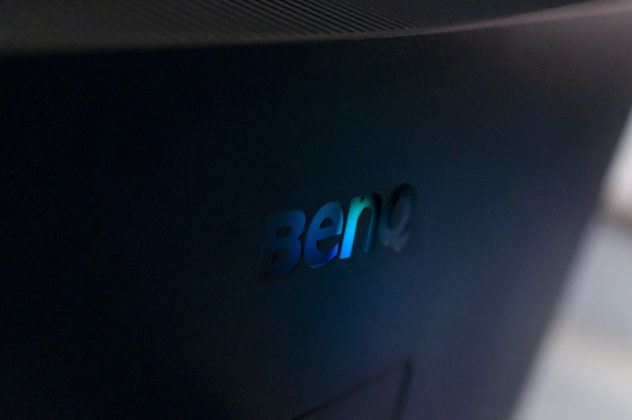
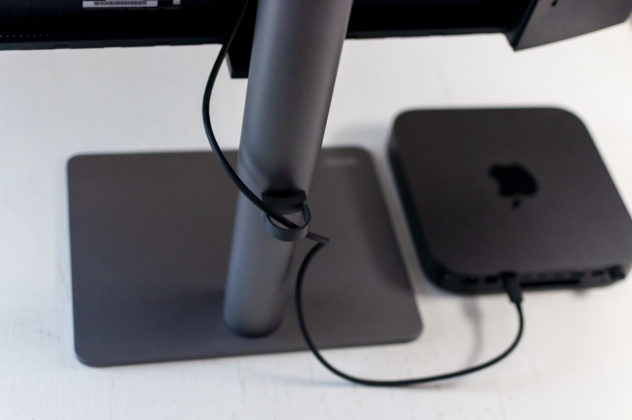

Panel and audio
The panel is 27 ″ 4K with IPS technology, with UHD resolution 3840 x 2160 pixels. The front is opaque; there are different display modes, which we will come back to later, which adapt to different contents, but let's say right away that by design it is not a display for those who play games, because the response is only 5 ms, too high for this. purpose, and then because the maximum brightness stands at 350 nits, not ideal for supporting the special effects required by some titles but if it is some “casual” shootout with consumer titles such as Starcraft II or League of Legends, perhaps during office lunch break, the BenQ PD2720U does not fail.
The audio is its strong point but a commodity: the speakers are considered as an additional element useful for those who have a Mac mini or Mac Pro or a Desktop PC without integrated speakers; for those who have room on the desk it is always better to have an external audio system (we used Razer's Nommo Pro).
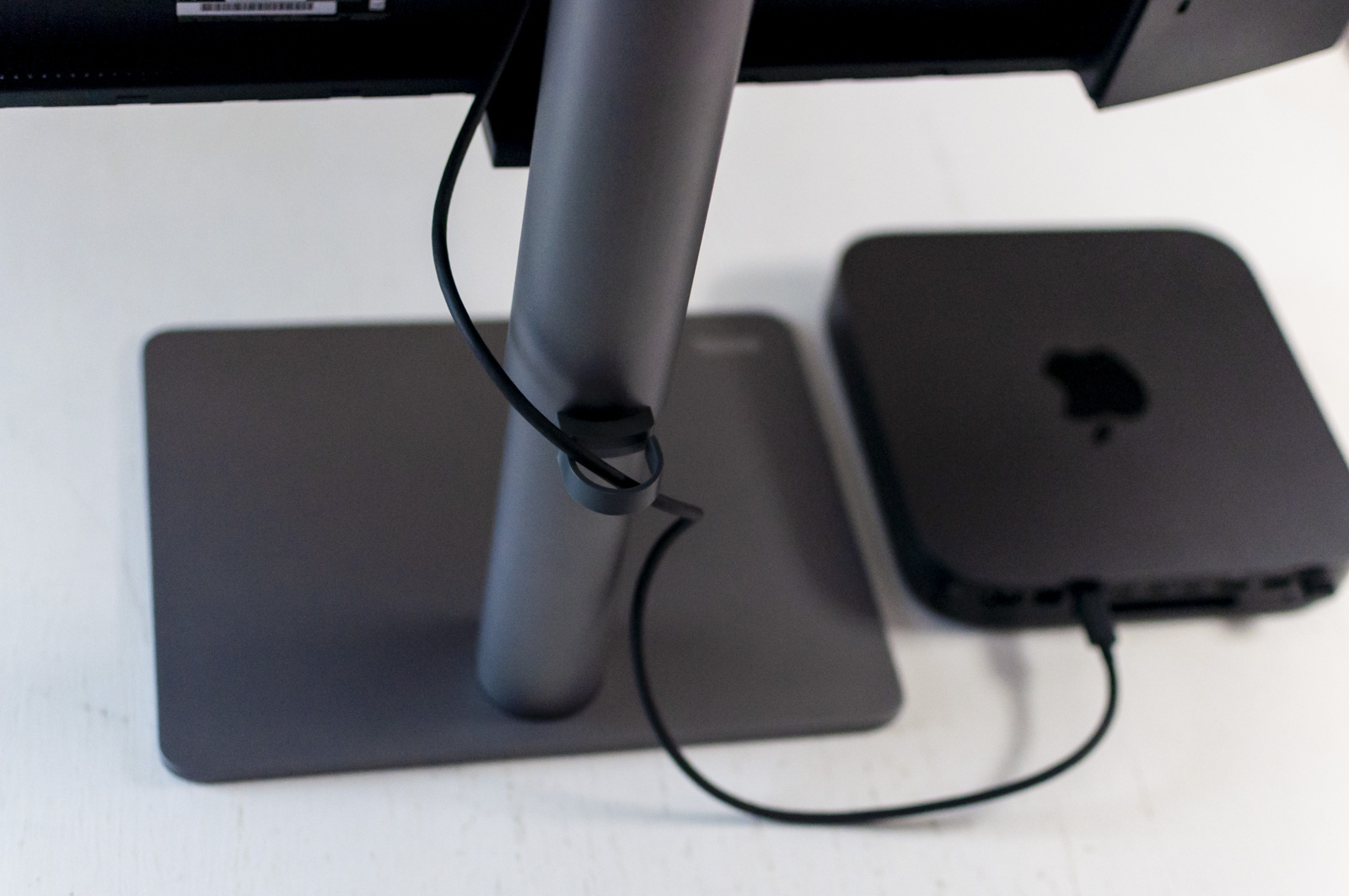
Color
While not advertised as a photographer-specific display, the BenQ PD2720U's panel is very good in this respect. After all, the CalMAN and Pantone certification are a good business card. Actually Benq claims that the display comes already pre-calibrated from the factory, which we cannot confirm as it is possible that the display under test has been used for other reviews that have changed the calibration.
That said, the declared color coverage (96% P3, 100% sRGB, 100% Adobe RGB) is high not only for those who do design, but also for those who do photography. From the tests we carried out in sRGB and Adobe RGB the display did indeed perform very well, while in the HDR10 mode we noticed that it tends to mix a little too much in the dark areas.
It should be noted that different monitor settings can be managed directly from Display Pilot, an application for Mac and Windows that makes it easier to navigate among the many monitor options: below you can see some screens.
1 of 6 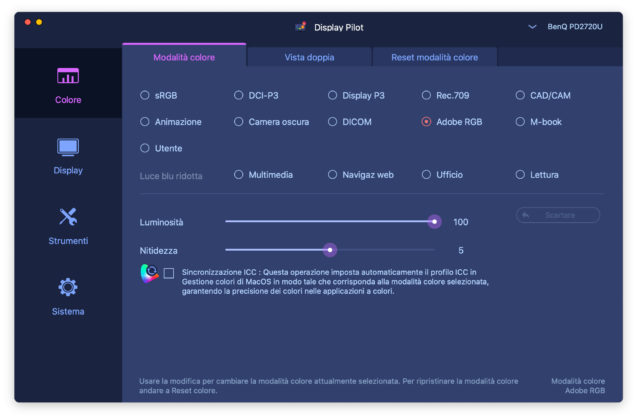 Some screenshots of Display Pilot, the utility that allows you to modify some sets from the App instead of calling the OSD menu
Some screenshots of Display Pilot, the utility that allows you to modify some sets from the App instead of calling the OSD menu 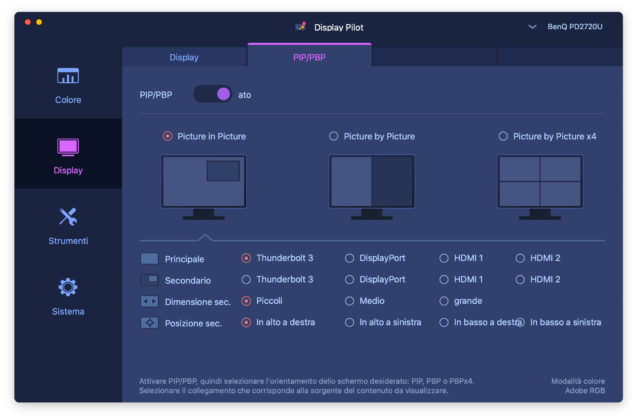
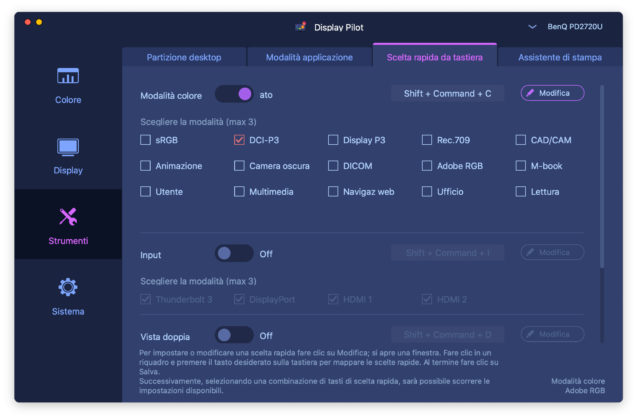
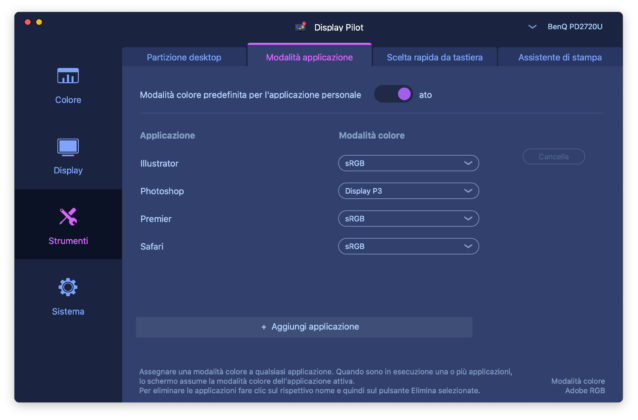
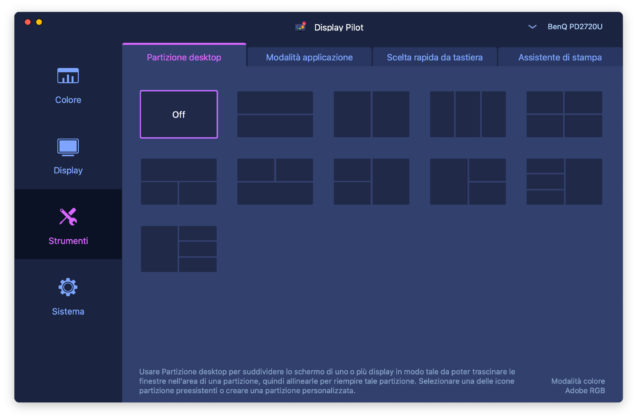
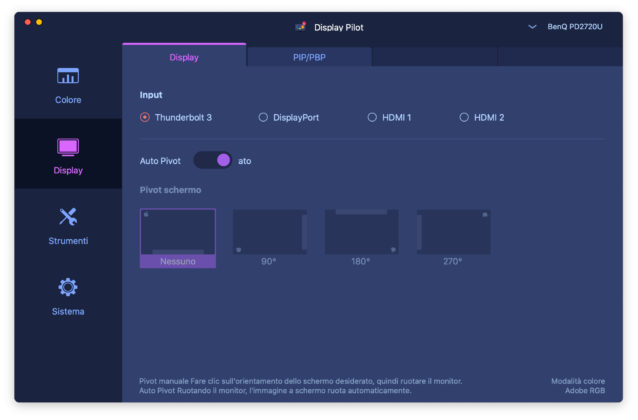
Hotkey Puck G2
The display, as we say above, offers a small joystick in the back with which it is very simple to navigate and operate the OSD menu. Among other things, thanks to the integrated multiscreen properties we were able to use the BenQ PD2720U with a Mac mini 2018, but also simultaneously with a Lenovo X1 Carbon PC via HDMI.
In reality, the monitor offers, among the modes, the possibility of simultaneously showing up to four different inputs (with a split into two or four of the display), performing an automatic switch between two sources (with mouse and keyboard via USB) and of course also work as a hub for a second Thunderbolt display connected to the second port.
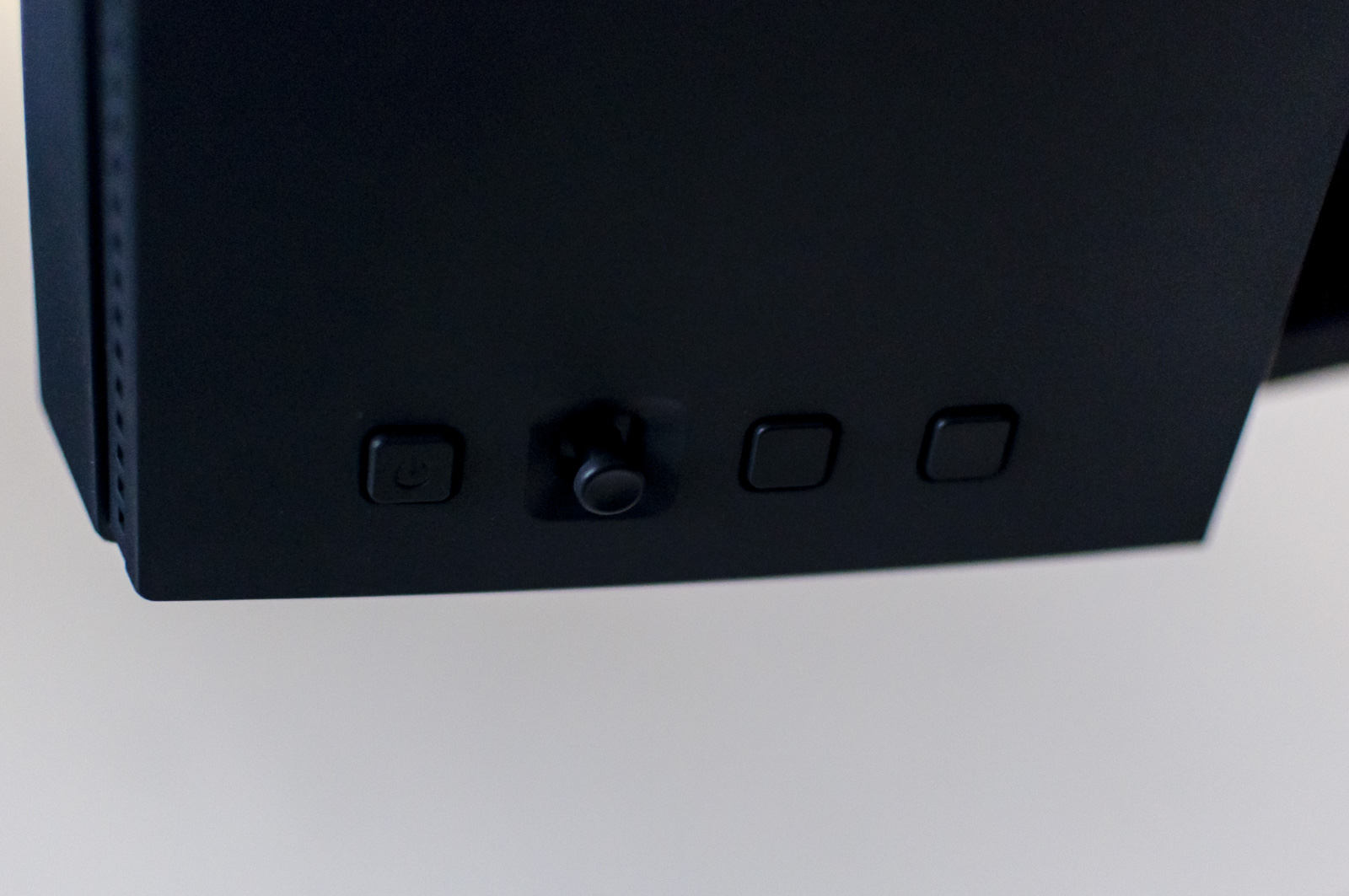
In detail, the functions are well thought out and everything happens very easily, but from what we have understood the two Thunderbolt connections are to be considered as a single video output: difficult to make an absolute evaluation, but from what emerged it seems that it is possible to use two screens in Thunderbolt 3, but to use two computers you need to use two different sources (in our case, Thunderbolt and HDMI).
The Thunderbolt 3 connection of the BenQ PD2720U works in an excellent way: with a single cable it is possible to carry the video signal, the data signal of a USB-A HUB and even power a laptop up to 65W (so it is good for MacBook Pro 13 ” , MacBook Air and most notebook PCs on the market but not for the new MacBook Pro 16 which requires more power).
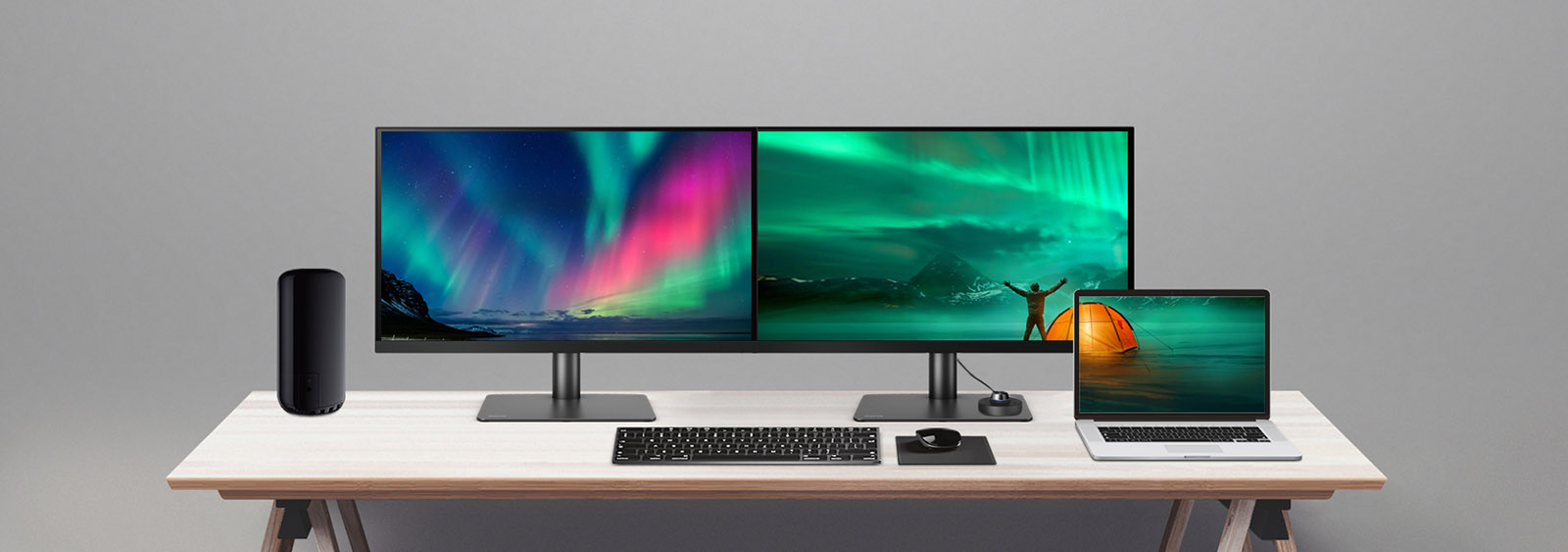
The “magic” Puck
The Hotkey Puck G2 that the BenQ PD2720U is dated is basically an external external control system that offers access to a series of shortcuts that avoid opening the OSD menu. In the round shape it includes a central wheel that typically adjusts the brightness; it is common to reprogram it for other functions. The buttons can be assigned color control or display type with multiple sources.
1 of 3 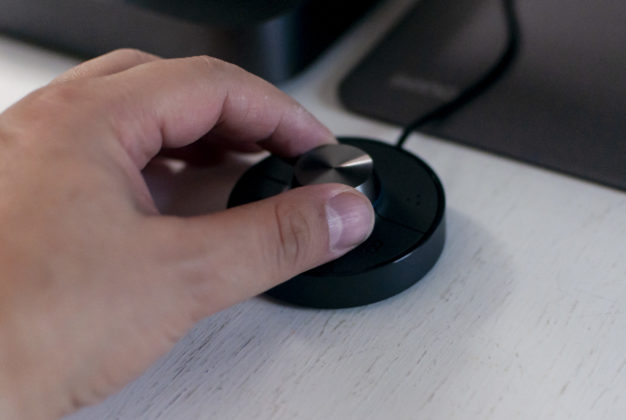
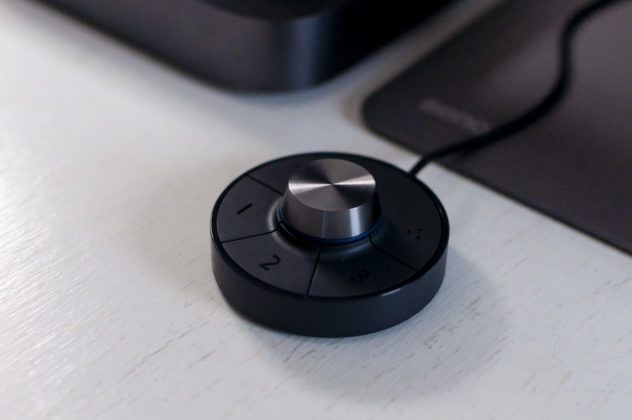
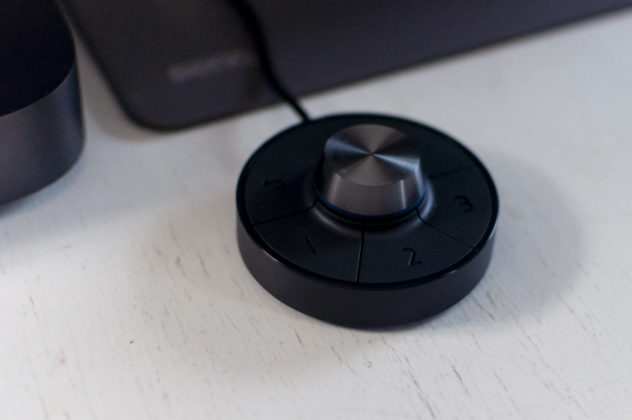
In fact, if you plan to connect a desktop computer to our monitor, the Hotkey Puck G2 is not much use (because once defined the parameters typically remain the same), if, on the other hand, you have a laptop (which also works alone) or more than a connected computer, then the Hotkey Puck G2 will soon become your best friend.
It should also be noted that if desired, the Display Pilot App written by Benq is also available which substantially automates the operation of the OSD menu.
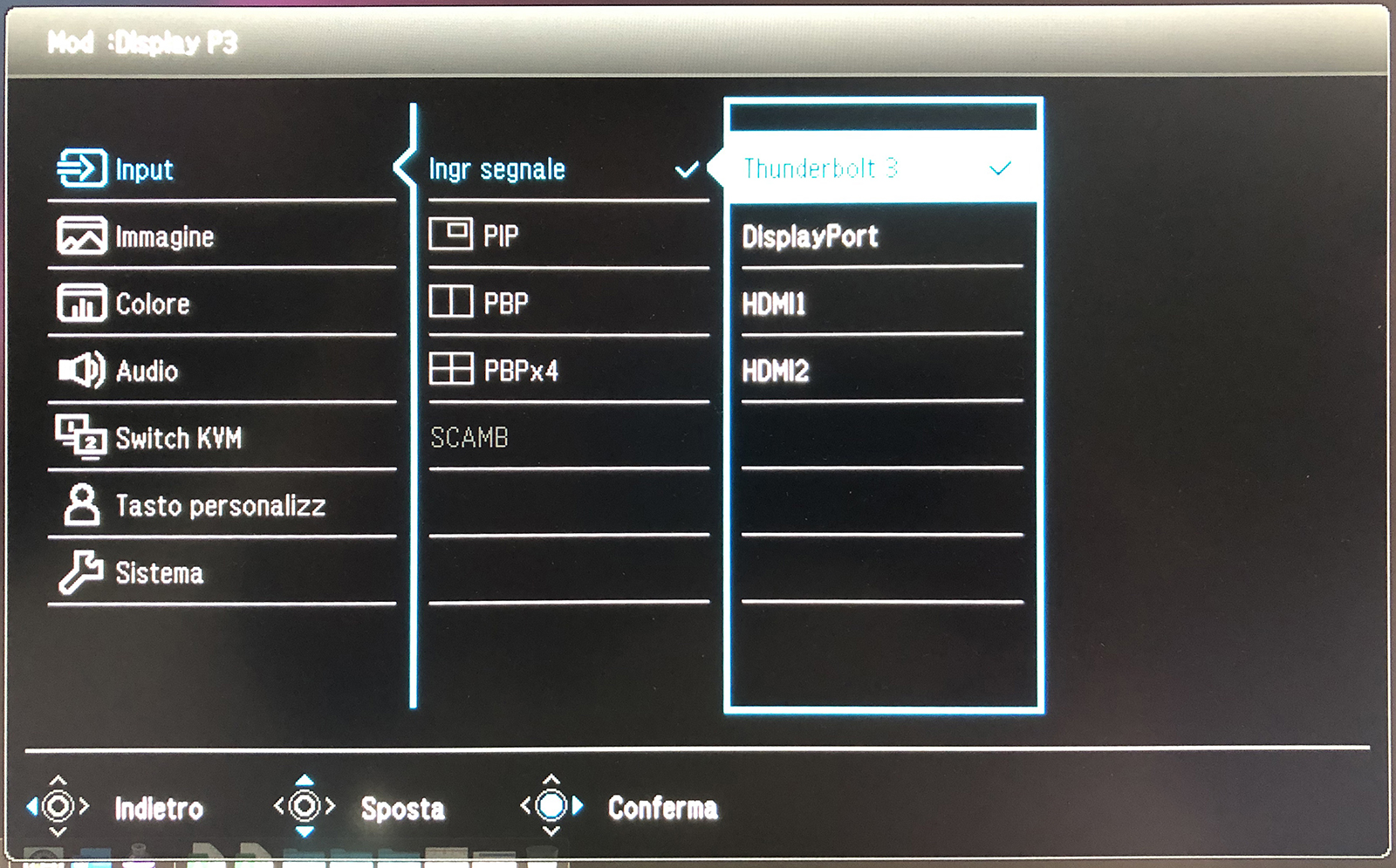
Conclusions
The Benq PD2720U is a professional monitor that is easy to fall in love with, because it offers a working environment of excellent quality, very flexible as regards the configuration and equally flexible in the presence of multiple computers, a factor quite common for some professionals such as those who works a lot on the move and has to switch from a laptop to a stationary one with the minimum of space on the desk.
Some details should be reviewed, such as the position of the connectors in the rear and, we do not deny it, also a greater power delivered by the Thunderbolt 3 so that it also feeds a 16 ″ MacBook Pro, but already this is a model to which, we admit, at the end of the test we struggled to separate.
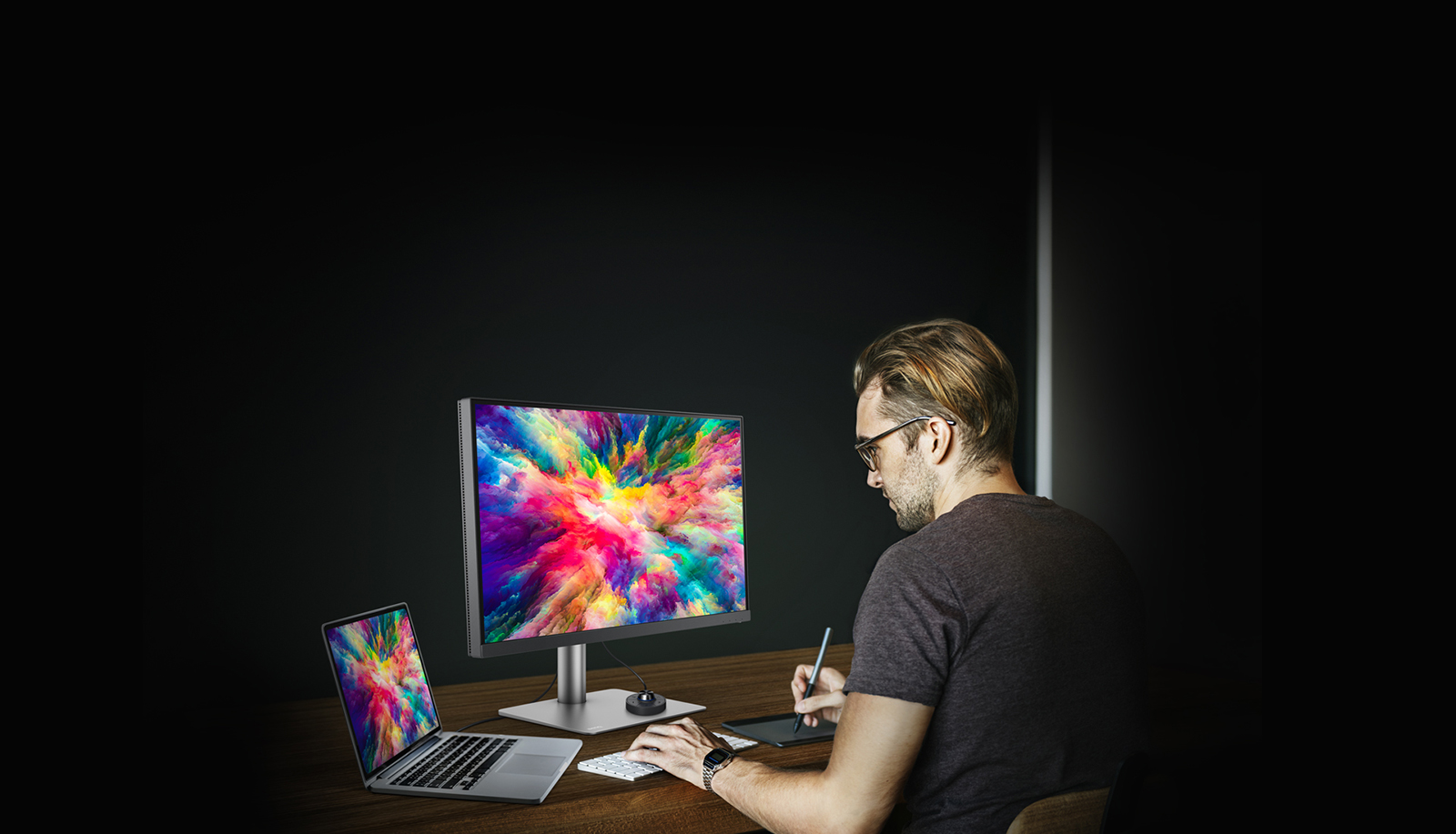
Pro
• Display quality • Multiple connections including Thunderbolt 3 • Powers a MacBook up to 15 ″ • Very convenient Hotkey Puck G2 • Mac and Windows software to speed up setup
Versus
• Thunderbolt power supply only goes up to 65 Watts • Connectors a bit awkward
Price
The Benq PD2720U is on sale at 999.00 Euro including VAT: more details and offers starting from the official website of the parent company, or even directly from the Amazon.it pages





